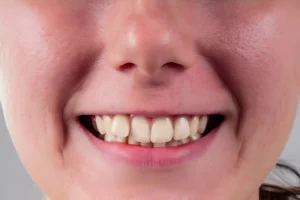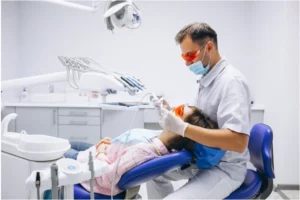Nowadays, braces have become increasingly common among children. Some kids even eagerly anticipate getting braces, viewing them as a milestone signaling their transition into teenage years, which can be quite exciting. As a parent, you likely have numerous inquiries about braces for kids.
In this comprehensive guide, we aim to address all your concerns regarding braces, such as determining if your child truly requires them, exploring various options available, understanding the process, managing costs, and much more.
Understanding the Importance of Braces for Kids
In orthodontics, we firmly advocate for prevention over cure, emphasizing the importance of regular check-ups for children. Crooked teeth pose significant challenges, regardless of age or oral hygiene practices, often impacting self-esteem due to societal standards.
That’s why we closely monitor the development of children’s permanent teeth, tracking their growth and formation from the outset to ensure optimal health. Addressing misalignments early in childhood capitalizes on the natural growth of the mouth, making it an ideal time for corrective measures.
While the idea of braces may seem intimidating for young individuals, it needn’t be daunting. Armed with the right knowledge and guidance, undergoing orthodontic treatment can be a manageable and even positive experience at any age.
What Occurs Initially?
During the initial appointment, the orthodontist conducts a comprehensive examination of your child’s teeth, mouth, and jaw. This involves assessing how the teeth align when biting, as well as inquiring about any issues with chewing, swallowing, or jaw discomfort, such as clicking or popping sensations.

X-rays of the mouth and teeth may be taken to evaluate tooth positioning and determine if any permanent teeth are yet to emerge. Additionally, the orthodontist may create a mold or impression of your child’s teeth using a moldable material. This process entails pressing a tray of impression material onto both the upper and lower teeth. Once the material sets, it forms a replica of your child’s teeth, aiding the orthodontist in determining the most suitable treatment options.
Exploring Types of Braces for Kids
When it comes to orthodontic treatment for children, there are several types of Braces for Kids available to address various dental alignment issues. Each type of brace offers unique features and benefits, catering to different preferences and treatment needs.
1. Traditional Metal Braces
Traditional metal braces consist of stainless steel brackets that are attached to the front surface of the teeth. These brackets are connected by a thin wire, which is periodically tightened to gradually shift the teeth into alignment. Rubber bands, also known as ligatures, are used to hold the wire in place and can be customized with different colors to suit the child’s preferences. Metal braces are highly effective for correcting a wide range of dental issues and are often the most affordable option.
2. Ceramic Braces
Ceramic braces are similar in design to traditional metal braces but use tooth-colored or clear ceramic brackets instead of metal. This makes them less noticeable and more aesthetically pleasing, especially for children who may be conscious about the appearance of traditional metal braces. Ceramic braces are slightly more expensive than metal braces but offer a discreet alternative for kids who require orthodontic treatment.
3. Lingual Braces
Lingual braces are similar to traditional metal braces but are attached to the back surface of the teeth, making them virtually invisible from the front. They offer the same effectiveness as traditional braces but provide a more discreet treatment option. Lingual braces require specialized training for installation and may be more challenging to clean compared to other types of braces.
4. Clear Aligners
Clear aligners, such as Invisalign, are a popular alternative to traditional braces for kids with mild to moderate alignment issues. These custom-made, removable plastic trays gradually shift the teeth into alignment through gentle pressure. When worn, clear aligners are almost undetectable, and you can choose to take them out for eating, brushing, and special events. However, clear aligners may not be suitable for all children, especially those with more complex orthodontic issues.
Choosing the right type of Braces for Kids depends on various factors, including the severity of their dental issues, their age, lifestyle, and personal preferences. Consulting with an experienced orthodontist is essential to determine the most suitable treatment option for your child’s specific needs and ensure the best possible outcome for their oral health and smile.
When Is the Appropriate Time to Think About Braces for Kids?
A child’s initial dental visit is ideally recommended around the age of 1 or upon the eruption of their first tooth. However, if signs of breathing or bite issues emerge earlier, an orthodontic assessment can be conducted promptly. By the ages of 6 to 8, children may begin to exhibit signs of malocclusion, such as a crossbite or severely protruding upper teeth, which may necessitate intervention due to potential trauma or aesthetic concerns.
Several indicators suggest that a child could benefit from an orthodontic evaluation:
- Premature, delayed, or irregular loss of primary teeth
- Challenges with chewing or biting
- Habitual mouth breathing
- Thumb or finger sucking
- Crowded, misaligned, or obstructed teeth
- Jaw irregularities, including shifting, protrusion, or misalignment
- Cheek or palate biting
- Teeth meeting abnormally or not aligning properly
- Disproportionate facial features, particularly in relation to the jaws and teeth
If any of these issues are observed, it’s unnecessary to wait until the child reaches the age of 7 to seek dental attention. Early intervention can help address potential orthodontic concerns and promote optimal dental health.
At What Age Do Children Typically Start Wearing Braces?
The timing for when a child might need braces is determined by the specific dental concerns they present. For instance, if a child is grappling with a severe bite problem, orthodontic intervention could commence as early as seven years old.
The age for braces varies based on individual circumstances, determined by orthodontists.
Typically, children between nine and 14 are suitable candidates due to having some permanent teeth.
Screening by an orthodontist is recommended as early as age seven, but braces are usually fitted after age 12, once the child has their 12-year molars and lost all primary teeth.
During screening, if an orthodontic issue is found, preemptive measures like a palatal expander may be used to prevent worsening.
Early orthodontic intervention is crucial to prevent more serious issues, emphasizing the importance of timely visits to an orthodontist.
What to Expect During the First Appointment
Your child’s dentist is the primary authority in identifying any potential early bite issues and assessing the necessity for treatment. In some cases, parents may notice evident signs such as crowded or protruding teeth.
“When evaluating the potential need for early orthodontic intervention,” explains the dentist, “we primarily seek out early indications of malocclusion.” While braces are commonly recommended between the ages of 10 and 15, coinciding with the emergence of some permanent teeth, it’s worth noting that Braces for Kids can be beneficial at any age, including adulthood.
Understanding the Cost of Braces for Kids
Several factors influence the cost of braces for your child:
- Geographical location
- Dental insurance coverage
- Type of braces
- Duration of treatment
Metal braces, the most prevalent type, generally range between $4,000 and $7,000. Typically, treatment plans encompass the cost of monthly appointments for care and adjustments. However, if your child neglects proper dental hygiene or consumes sticky or hard foods like taffy and popcorn, leading to brace damage, additional expenses may be incurred for repairs.
Conclusion
In conclusion, as braces become increasingly common among children, parents need to understand the process and options available. By addressing concerns regarding the necessity and affordability of braces, Simply Braces aims to empower parents to make informed decisions about their child’s orthodontic care. Ultimately, the focus should be on providing the right treatment for your child’s dental health needs. Consultation with a dentist or orthodontist can help determine the necessity of braces and ensure your child’s smile receives the care it deserves. A self-assured smile is precious, after all.
If you have any Braces for Kids queries, don’t hesitate to call Simply Braces, or contact us online – we are always happy to help.








